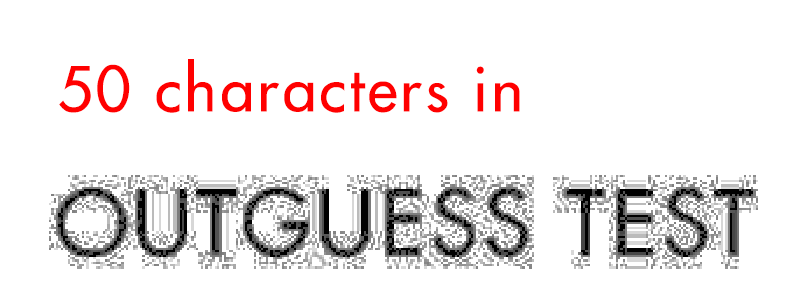

Other options that apply to the general execution of outguess: eE Use error correction for data encoding and decoding.

Specify the upper limit for finding an optimal iterator seed. Without searching for a more optimal embedding. If no upper limit is specified, the iterator will use this seed Specify the initial seed the iterator object uses for selecting bits in the Specify the filename containing a message to be hidden in the data. Specify the secret key used to encrypt and hide the message in the provided data. Result, no statistical test that is based on frequency counts will be able toĭetect steganographic content. Specifies that OutGuess should preserve statistics based on frequency counts. The following command line options, when specified as capital letters, indicate options Artifical errors are introduced to avoid modifying
#Another name for outguess code
A (23,12,7) Golay code is used for error correction to It keeps track of the bits that have been modified

Value, and tries to avoid the modification of bits that were extracted from a low value.Īdditionally, Outguess allows for the hiding of two distinct messages in the data, thus By altering the seed, outguess tries to findĪ sequence of bits that minimizes the number of changes in the data that have to be made.Ī bias is introduced that favors the modification of bits that were extracted from a high The data along with the rest of the message. A seed can be used to modify the behavior of the iterator. Outguess uses a generic iterator object to select which bits in the data should be PPM, PNM, and JPEG image formats are supported, although outguess could use any kind ofĭata, as long as a handler were provided. Will extract redundant bits and write them back after modification. The program relies on data specific handlers that Information into the redundant bits of data sources. x maxkeys ] ]ĭESCRIPTION Outguess is a universal steganographic tool that allows the insertion of hidden


 0 kommentar(er)
0 kommentar(er)
